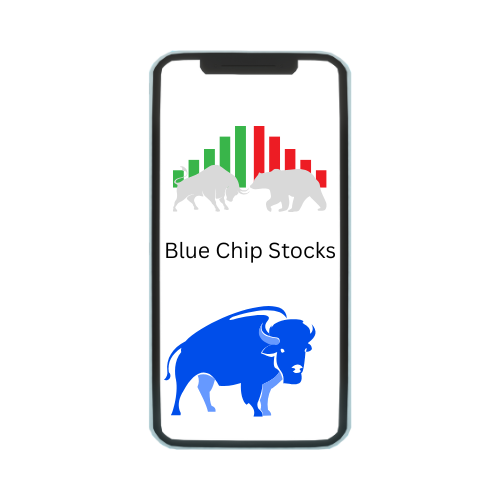The introduction serves as the gateway to understanding the Heikin-Ashi technique, a powerful tool in technical analysis for traders and investors alike. Heikin-Ashi, a Japanese term translating to “average pace,” represents a modified approach to candlestick charting. Unlike traditional candlestick charts, which often present complex and noisy price action, Heikin-Ashi charts offer a smoother representation of market trends, filtering out short-term fluctuations and emphasizing prevailing price direction. This technique achieves its clarity by employing a formula that calculates each candlestick’s open, high, low, and close based on the average prices of the previous candle. By doing so, Heikin-Ashi charts provide traders with a clearer picture of market sentiment and trend dynamics, enabling them to make more informed trading decisions. As we delve deeper into this article, we’ll explore the intricacies of the Heikin-Ashi technique, its formula, calculation process, interpretation, advantages, and its distinctions from other charting methods, shedding light on its significance in the realm of financial analysis and trading strategies.
What is the Heikin-Ashi Technique?
The Heikin-Ashi technique is a valuable tool in technical analysis utilized by traders to decipher market trends with greater clarity and precision. Unlike traditional candlestick charts, which can often be marred by fluctuations and noise, Heikin-Ashi charts offer a smoother representation of price action, making it easier to identify trends and potential reversals. This technique achieves its effectiveness through a modified formula that calculates each candlestick’s open, high, low, and close based on the average prices of the previous candle. By smoothing out price fluctuations, Heikin-Ashi charts provide traders with a clearer picture of market sentiment and trend direction, allowing them to make more informed trading decisions. Additionally, the visual simplicity of Heikin-Ashi charts makes them particularly useful for both novice and experienced traders alike, enhancing their ability to spot trends and patterns within the market. Overall, the Heikin-Ashi technique serves as a powerful tool for traders seeking to navigate the complexities of financial markets with confidence and precision.
The Formula for the Heikin-Ashi Technique
The formula for calculating Heikin-Ashi candlesticks involves:
- Heikin-Ashi Close: (Open + High + Low + Close) / 4
- Heikin-Ashi Open: (Previous Heikin-Ashi Open + Previous Heikin-Ashi Close) / 2
- Heikin-Ashi High: Maximum of the High, Heikin-Ashi Open, or Heikin-Ashi Close
- Heikin-Ashi Low: Minimum of the Low, Heikin-Ashi Open, or Heikin-Ashi Close
How to Calculate Heikin-Ashi
Calculating Heikin-Ashi candlesticks involves a specific process that differs from traditional candlestick charts. Here’s a detailed breakdown of how to calculate Heikin-Ashi:
- Calculate Heikin-Ashi Close:
- Add the open, high, low, and close prices of the current period.
- Divide the sum by 4 to obtain the Heikin-Ashi close for the current period.
- Calculate Heikin-Ashi Open:
- Use the previous Heikin-Ashi open and close prices.
- Add them together and divide by 2 to determine the Heikin-Ashi open for the current period.
- Determine Heikin-Ashi High:
- Compare the high price of the current period with the Heikin-Ashi open and close.
- Choose the highest value among these three to represent the Heikin-Ashi high.
- Determine Heikin-Ashi Low:
- Compare the low price of the current period with the Heikin-Ashi open and close.
- Choose the lowest value among these three to represent the Heikin-Ashi low.
- Repeat the Process:
- Continue this calculation process for each subsequent period, using the calculated values from the previous period.
By following these steps, traders can generate Heikin-Ashi candlesticks that offer a smoother representation of market trends, aiding in the identification of potential trading opportunities and enhancing overall decision-making processes.
Understanding Heikin-Ashi Signals
Understanding Heikin-Ashi signals is pivotal for traders aiming to interpret market trends and make informed decisions. Heikin-Ashi candlesticks provide valuable insights into market sentiment and trend direction by smoothing out price fluctuations and noise. A green (or white) Heikin-Ashi candle typically indicates an uptrend, signaling that buying pressure is prevailing in the market. Conversely, a red (or black) candle suggests a downtrend, indicating that selling pressure is dominating. Traders also pay attention to the size and shape of the candlesticks, as patterns like doji and spinning tops can signify potential trend reversals or indecision in the market. By analyzing Heikin-Ashi signals in conjunction with other technical indicators and market context, traders can gain a deeper understanding of price dynamics and improve their ability to anticipate future price movements. Overall, mastering the interpretation of Heikin-Ashi signals empowers traders to navigate the complexities of financial markets with greater confidence and precision.
Advantages of Heikin-Ashi Charts
Heikin-Ashi charts offer several advantages for traders and investors seeking to analyze market trends and make informed decisions:
- Noise Reduction: Heikin-Ashi charts smooth out price fluctuations and market noise, providing a clearer and more coherent representation of trend direction compared to traditional candlestick charts.
- Trend Identification: By filtering out short-term price movements, Heikin-Ashi charts make it easier for traders to identify and follow prevailing trends in the market, enhancing trend-following strategies.
- Clearer Signals: The modified candlestick formula used in Heikin-Ashi charts results in clearer and more defined signals of trend continuation or reversal, helping traders to make timely and accurate decisions.
- Simplicity: Heikin-Ashi charts are visually simpler and easier to interpret compared to traditional candlestick charts, making them particularly useful for novice traders or those who prefer a more straightforward approach to technical analysis.
- Enhanced Risk Management: By providing clearer signals of trend direction, Heikin-Ashi charts enable traders to establish more effective stop-loss levels and manage risk more efficiently, thereby improving overall trading performance.
- Versatility: Heikin-Ashi charts can be applied to various financial instruments and timeframes, making them suitable for traders across different markets and trading styles.
Heikin-Ashi vs. Renko Charts
Heikin-Ashi Charts | Renko Charts |
Based on modified candlestick formulas. | Constructed based on price movements. |
Smooths out price fluctuations and noise. | Represents price movements in a series of bricks or blocks. |
Offers clearer signals of trend direction. | Emphasizes trend continuation or reversal patterns. |
Less sensitive to short-term volatility. | Filters out noise and focuses on significant price moves. |
Typically displays candlesticks. | Presents bricks or blocks with no wicks or shadows. |
Relatively easier for novice traders to interpret. | May require familiarity with specific brick sizes. |
Suitable for trend-following and reversal trading. | Often used for trend-following strategies. |
Can be applied to various timeframes. | Generally adaptable to different timeframes. |
Example Using Heikin-Ashi Candlesticks
Let’s consider an example illustrating the application of Heikin-Ashi candlesticks in analyzing market trends and making trading decisions. Suppose we’re examining the price action of a particular stock over a period of time using Heikin-Ashi charts. As we observe the candlestick patterns, we notice a series of consecutive green (or white) candlesticks forming, indicating a sustained uptrend in the stock’s price. The Heikin-Ashi candlesticks provide a smooth representation of price movements, filtering out short-term fluctuations and noise, which allows us to clearly identify the prevailing bullish momentum in the market. Additionally, we notice that the size of the candlesticks gradually increases, suggesting growing bullish strength. Based on this observation, traders might consider entering a long position, anticipating further upside potential in the stock. However, as the uptrend progresses, we might also spot a doji or a series of small-bodied candlesticks, signaling potential indecision or a weakening of bullish momentum. In such cases, traders might exercise caution and consider adjusting their positions or implementing risk management strategies. Overall, this example demonstrates how Heikin-Ashi candlesticks can provide valuable insights into market trends and help traders make informed trading decisions with greater confidence and precision.
Conclusion
In conclusion, the Heikin-Ashi technique offers traders a powerful tool for navigating the complexities of financial markets with enhanced clarity and precision. By smoothing out price fluctuations and providing clearer signals of trend direction, Heikin-Ashi charts enable traders to identify market trends more effectively and make informed trading decisions. The modified candlestick formulas used in Heikin-Ashi charts help filter out noise and highlight significant price movements, thereby improving the accuracy of trend analysis and enhancing risk management strategies. Furthermore, the simplicity and versatility of Heikin-Ashi charts make them accessible to traders of all experience levels, from novice to seasoned professionals. Whether used for trend-following, reversal trading, or identifying potential trade setups, Heikin-Ashi charts remain a valuable asset in the trader’s toolkit. Overall, the Heikin-Ashi technique stands as a testament to the power of innovative technical analysis methods in deciphering market dynamics and aiding traders in achieving their financial goals.
Frequently Asked Questions(FAQs)
To use Heikin-Ashi candles, traders analyze the color and shape of the candlesticks to identify trends and potential reversals. Green (or white) candles indicate an uptrend, while red (or black) candles suggest a downtrend.
The Heikin-Ashi technique differs from traditional candlestick charts in its formula for calculating candlestick values. Instead of using the open, high, low, and close prices, Heikin-Ashi charts use a modified formula that takes into account the average prices of the previous candle.
Some common trading strategies involving Heikin-Ashi charts include trend following, reversal patterns, and using Heikin-Ashi signals in conjunction with other technical indicators to confirm trade entries and exits.



